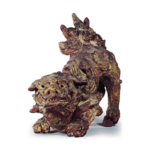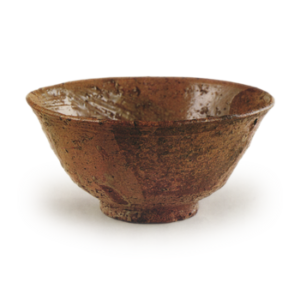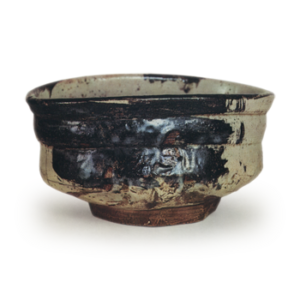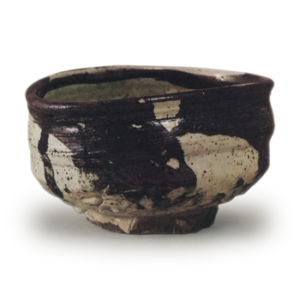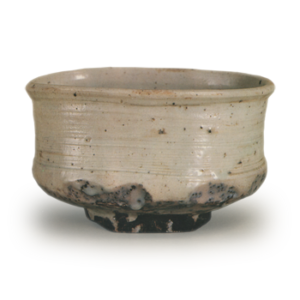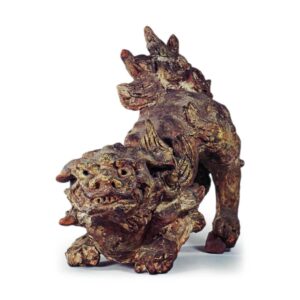
Height 35.5cm
Raku Museum
According to “Raku Tea Bowl” by Isono (now Okochi), it is said to have been made on a tore cover tile. It is a valuable material for examining Chojiro ware, and has an inscription “Tensho 2 Haru Yorimei Chojira Zukuri No” engraved on the lion’s belly. This is the earliest dated Raku piece to be made by Chojiro, and it also suggests that Chojiro, or the founder of Raku ware, was the creator of this type of decorative tile. However, it is not clear who ordered the tiles to be made. The clay exposed in some parts is clearly the same as that used in a series of early Chôjiro ware such as “Muichimono,” and the glaze applied over the entire surface is also of the same nature as that used in “Muichimono” and other such wares. The lion motif is a representation of the Kara-shishi (Chinese lions) that were popular during the Momoyama period (1573-1600). Although some people consider it to be a later work, the clay taste and glaze tone suggest that it was made in the Tensho II period, as indicated by the engraved inscription.

